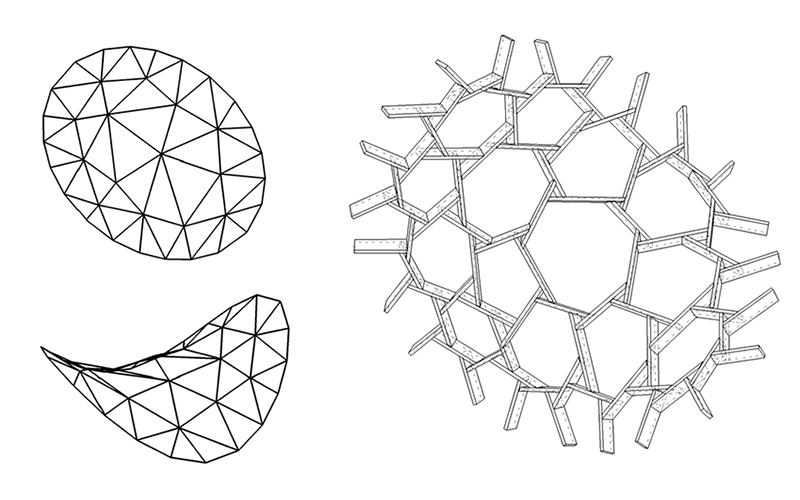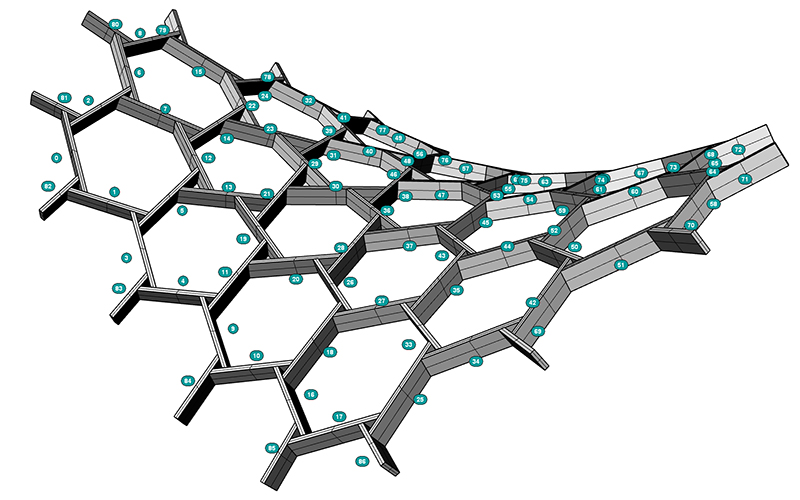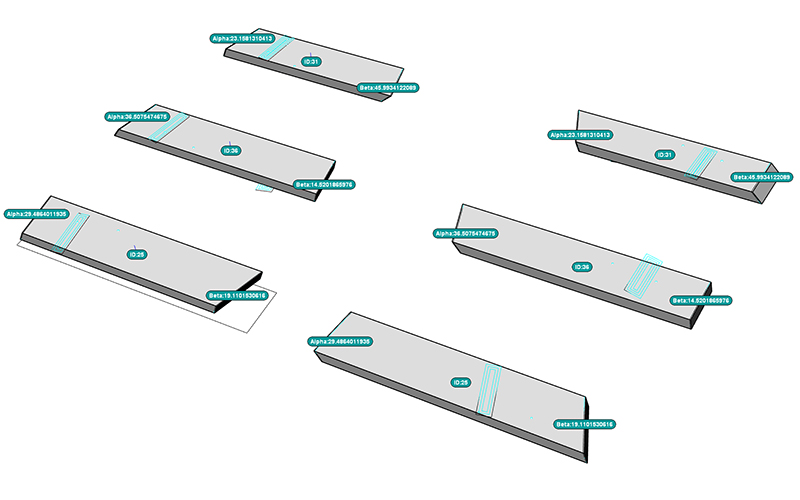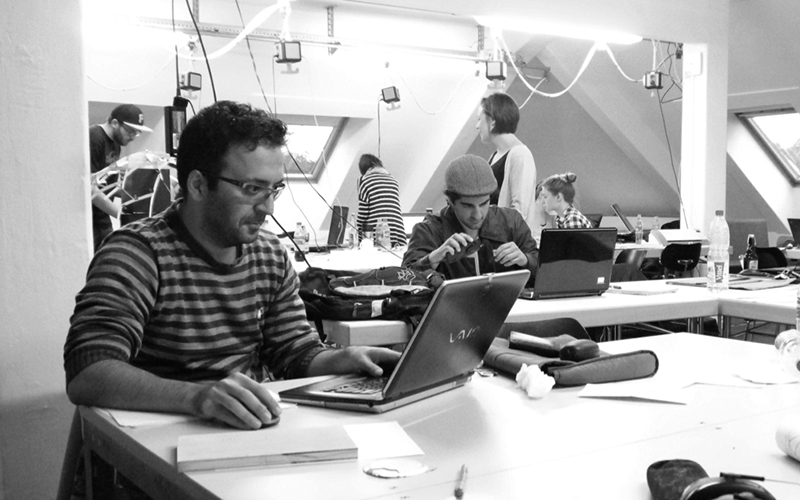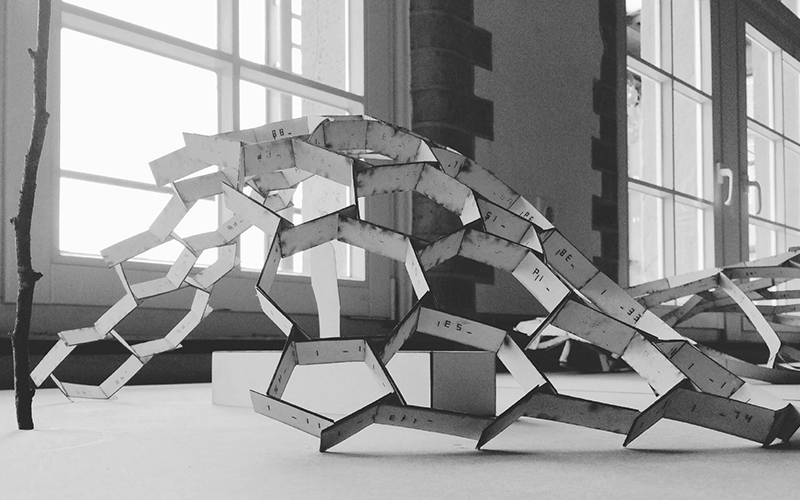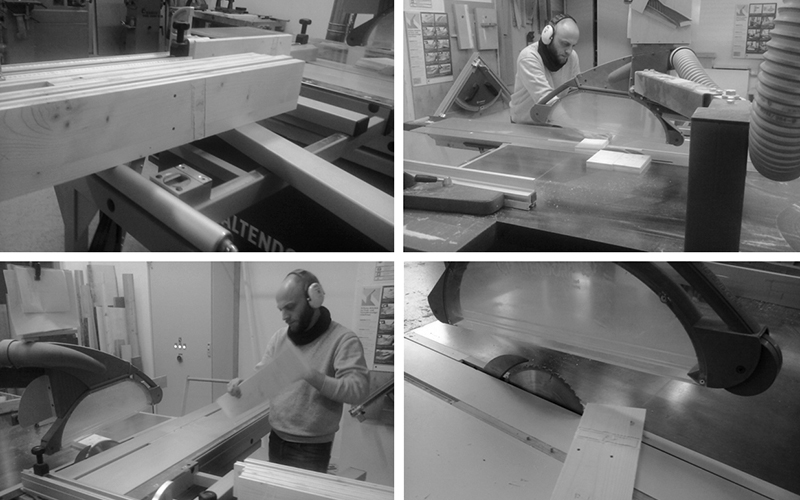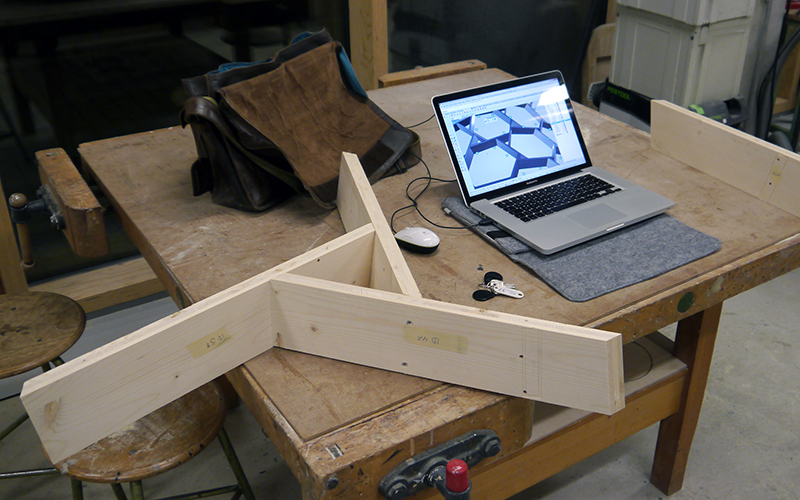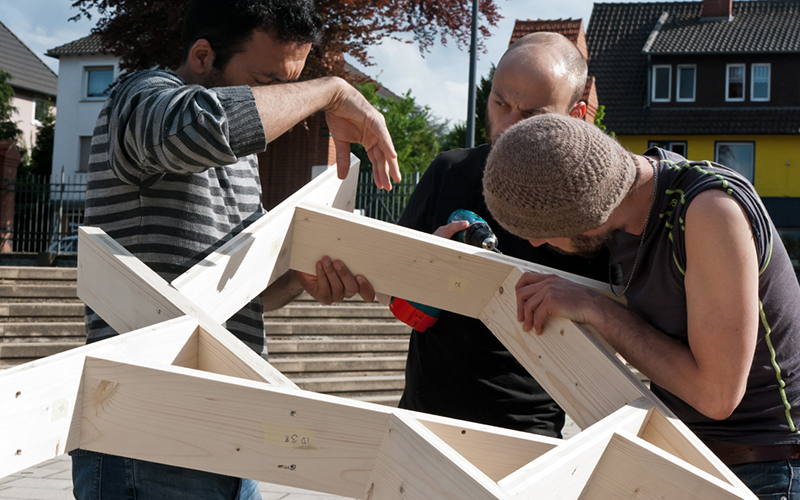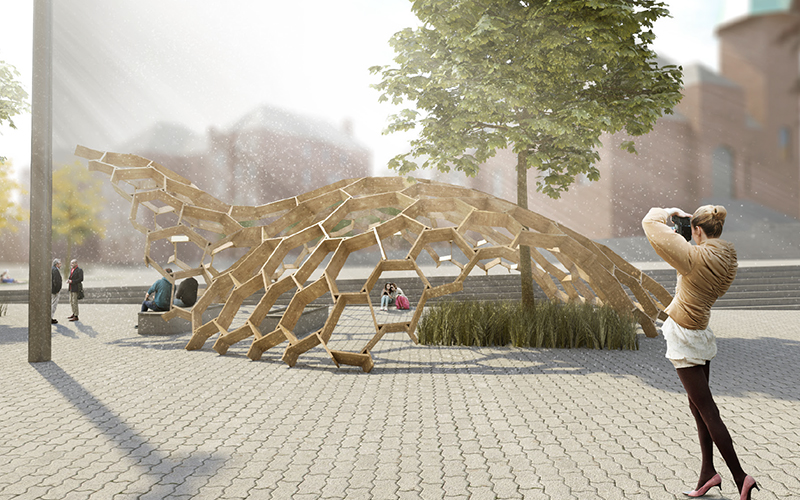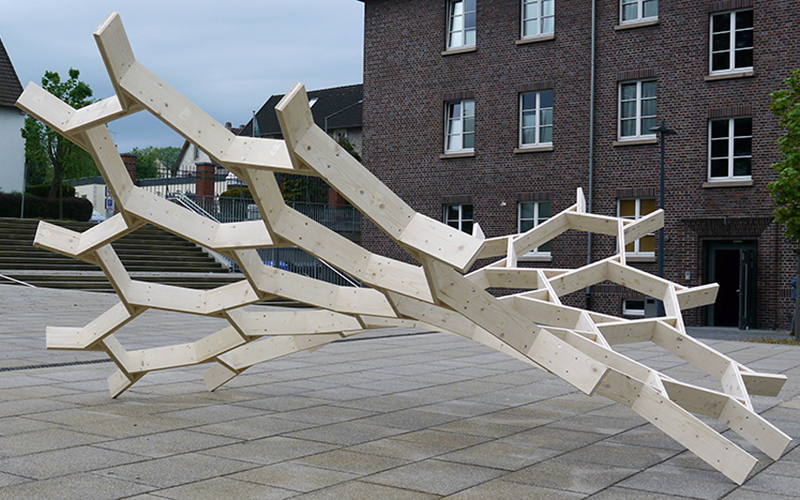- Informed Architecture
A four-day intensive program included both computational form-finding strategies in the design process as well as construction principles and digital fabrication technologies for the 1:1 realization of a reciprocal roof structure. Michael Knauß, founding partner of the Zurich-based ROK office, conducted the workshop during the Detmolder Räume, a creative week of experimentation in interdisciplinary work. The elective course aimed at the development of an innovative construction method based on self-supporting, reciprocal systems. The system’s basic element was the expanded node. A node is generally defined as a number of bar-elements that meet at or near a point within a system. Regarding fabrication and the assembly of nodes, the system’s complexity increases with the number of bars meeting at one point.
The geometric expansion of the node reduces complexity and allows a simple sequential joining process. This in turn creates a node with structural reciprocity, which has bending resistance and shear resistance, even though in its static system all connections are pin-jointed. A minimum of 3 beams is required to create a reciprocal frame roof. As each beam supports the next in a reciprocal manner no internal support structure is required. The only support required is that for the outer end of each beam, which will normally be a post used for the wall or the foundation. The starting point for the project was using this principle for a reciprocal frame, i.e. a roof structure where each beam both supports and is supported by other beams in the roof structure.
CREDITS
Michael Knauß, Prof. Marco Hemmerling, David Lemberski, Guido Brand, Kaveh Allahdin, Eduard Benke, Larina Faßler, Lars Frenz, Tal Friedman, Jennifer Hilbert, Jan C. Kahre Heidemann, Linda Kirsten, Julian Lianarachchi, Vera Nolte, Henrik Steffen, Felix Stiboy, Ghaith Tish, Martin Trittin, Muralimanoj Varadharajan, Jirka Wolff.
Master Computational Design and Construction
East-Westphalia University of Applied Sciences

